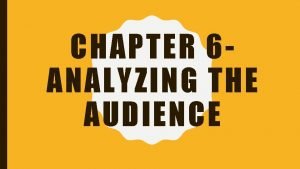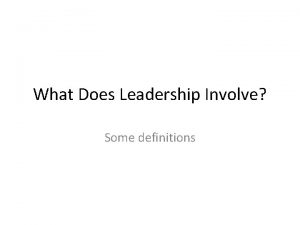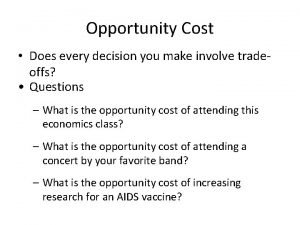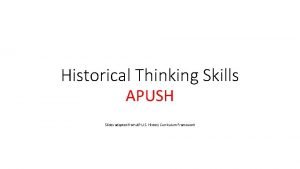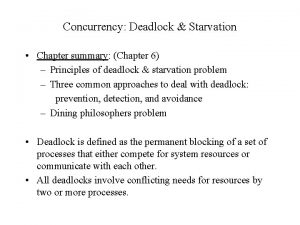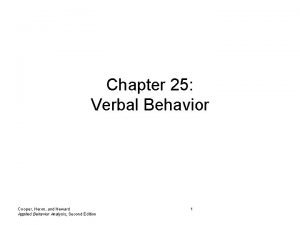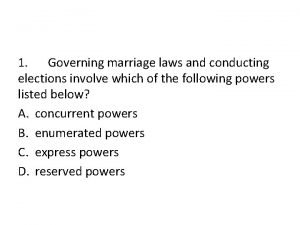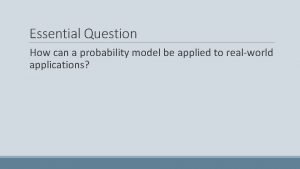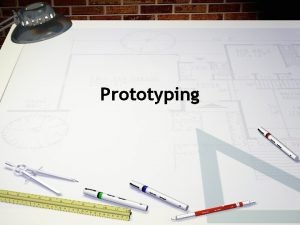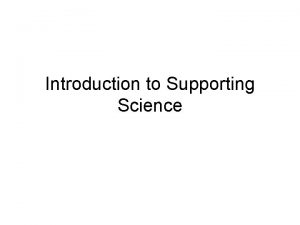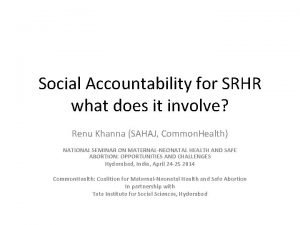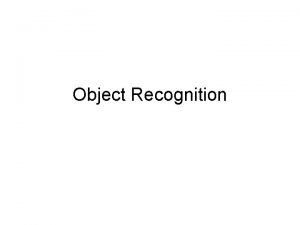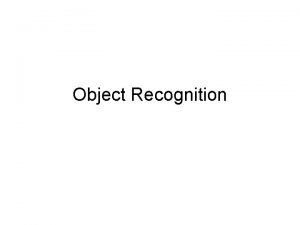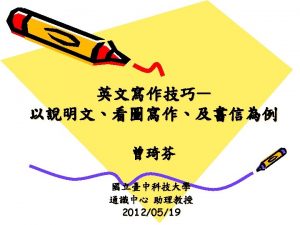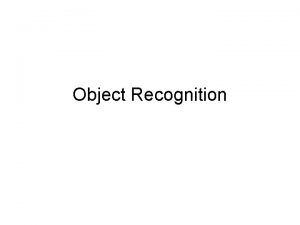Introduction to Presenting What Does Presenting Involve Providing


















- Slides: 18

Introduction to Presenting

What Does Presenting Involve? • Providing information in verbal, written, and multimedia forms • Ensuring listeners understand the organization and development of ideas • Selecting the appropriate content, format, and multimedia tools for a presentation's purpose and audience.

Value of Making Presentations • Demonstrates content knowledge • Promotes ability to organize information for sharing • Builds appreciation for the demands of having listeners • Draws on skills in writing with a purpose for an audience

Making Presentations For Different Purposes • • • Informing Analyzing Narrating Persuading Describing

Possible Areas of Difficulty for Struggling Students • • • Gathering relevant information Setting a purpose Organizing information Understanding audience needs Selecting appropriate multimedia tools

Discussion Questions 1 1. What kinds of presentations are your students required to make? Why? 2. In what ways do you draw upon reading and writing strategies when developing your students' presenting skills? 3. What challenges do your students face in gathering and organizing information to meet audience needs?

How Can I Support Students?

Use of Evidence-Based Practices • Provide Direct Instruction • Help Students Present for a Variety of Purposes • Engage Students in Ongoing Assessment

Differentiated Instruction • Plan instruction that considers students' readiness, learning needs, and interests. • Use a range of technology tools to: – engage learners at varying levels – engage learners in multiple ways. – offer students options for demonstrating understanding and mastery

Teacher-Dependent Ways to Differentiate • By Content – Different levels of reading or resource materials, reading buddies, small group instruction, curriculum compacting, multilevel computer programs and Web Quests, audio materials, etc. • By Product – Activity choice boards, tiered activities, multi-level learning center tasks, similar readiness groups, choice in group work, varied journal prompts, mixed readiness groups with targeted roles for students, etc. • By Process – Tiered products, students choose mode of presentation to demonstrate learning, independent study, varied rubrics, mentorships, interest-based investigations

Student-Dependent Ways to Differentiate • By Readiness – Options in content, topic, or theme, options in the tools needed for production, options in methods for engagement • By Profile – Consideration of gender, culture, learning styles, strengths, and weaknesses • By Process – Identification of background knowledge/gaps in learning, vary amount of direct instruction, and practice, pace of instruction, complexity of activities, and exploration of a topic

Discussion Questions 2 1. How can you use UDL principles to enhance students' presentation abilities? 2. How do you build differentiation into teaching students ways to present information? 3. What variety of classroom activities most lend themselves to authentic presentations?

Provide Direct Instruction: Possible Strategies • Demonstrate your own techniques for incorporating digital tools into presentations. • Explicitly show students how to use a variety of digital tools, tied to presentation purpose. • Provide step-by-step tutorials and models for varied presentation tools

Help Students Present for a Variety of Purposes: Possible Strategies • Help students understand that different digital formats can be used for different purposes. • Have students present the same talk for different purposes; e. g. persuading, describing, analyzing, informing, and narrating. • Expand the concept of audience, based on purpose.

Engage Students in Ongoing Formative Evaluation: Possible Strategies • Have students use a rubric to provide speaker feedback. • Add elements of speaking and listening to the publishing stage of the writing process. • Use blogs and podcasts to publish and share presentations beyond the classroom.

Introduce Students to Technology Tools • Example tools for multimedia presentations: – Powerpoint and other slideshow creators – Browser-based presentation tools; e. g. Prezi and Empressr – Audio recording and editing tools; e. g. Garageband – Simple animation via tools; e. g. Goanimate and Voki – Annotation tools; e. g. Voicethread or Coach's Eye

Discussion Questions 3 1. What are some methods you have used to effectively expand student understanding of why and how to tailor presentations to audience interest and need? 2. What technology tools do you use? How do you teach students to select the appropriate tools? 3. What technology tools have you used to support gathering and analyzing data?

Disclaimer Awarded through a cooperative agreement from the U. S. Department of education, Office of Special Education Programs (OSEP), Grant #H 327 G 090004 -10, Power. Up What Works was developed by a team of experts in education, technology, differentiated instruction/UDL, and special education at the Center for Technology Implementation, operated by the American Institutes for Research (AIR) in collaboration with the Education Development Center, Inc. (EDC) and the Center for Applied Special Technology (CAST). • This document contains information from other public and private organizations that may be useful to the reader; these materials are merely examples of resources that may be available. Inclusion of this information does not constitute an endorsement by the U. S. Department of Education of any products or services offered or views expressed. This publication also contains hyperlinks and URLs created and maintained by outside organizations and provided for the reader's convenience. The Department is not responsible for the accuracy if this information. Further, the programs/models/resources featured on this site have not been extensively evaluated by CTI. This website was created and is maintained by American Institutes for Research (AIR) through funding from the U. S. Department of Education, Award # H 327 G 090004. For more information, send an e-mail to Power. Up@air. org.
 Audience centeredness
Audience centeredness What does leadership involve
What does leadership involve Opportunity costs and trade offs
Opportunity costs and trade offs High school movie genre
High school movie genre Apush historical thinking skills
Apush historical thinking skills Does providing a good value mean selling at a low price
Does providing a good value mean selling at a low price Simile in figure of speech
Simile in figure of speech Routine message email example
Routine message email example All deadlocks involve conflicting needs for
All deadlocks involve conflicting needs for In metaphoric extension the novel stimulus shares
In metaphoric extension the novel stimulus shares First law bar chart
First law bar chart Governing marriage laws and conducting elections involve
Governing marriage laws and conducting elections involve Sampling procedure involve
Sampling procedure involve Ali ahmed is a mathematics professor who tries to involve
Ali ahmed is a mathematics professor who tries to involve Do these situations involve bernoulli trials
Do these situations involve bernoulli trials Colorimetry experiments
Colorimetry experiments What is the fit formula for calisthenics
What is the fit formula for calisthenics Compromises in prototyping
Compromises in prototyping Homotrophic effects for allosteric enzymes involve
Homotrophic effects for allosteric enzymes involve
